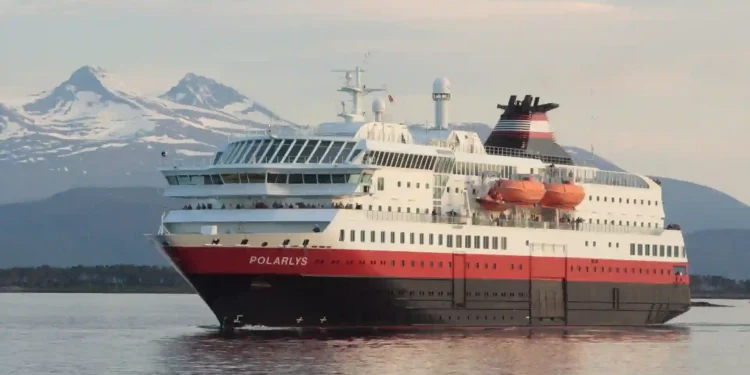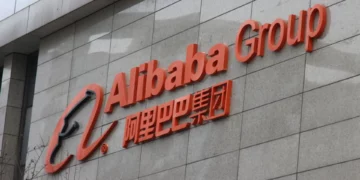Hurtigruten Norway is pleased to offer guests a more sustainable experience
Hurtigruten Norway is among the largest green upgrades of its kind in Europe and the largest in Hurtigruten’s record. When the new Richard With is now back on schedule as their first hybrid ship, guests along the entire coast can sail on a quieter, technically state-of-the-art, and more environmentally friendly ship says Hedda Felin, CEO of Hurtigruten Norway.
As part of the effort to make its fleet more sustainable, Hurtigruten Norway will invest more than NOK 1 billion in green upgrades of all seven ships on the coastal route. The upgrades cut down CO2 emissions from the company’s ships by 25% and Nitrogen oxides (NOx) by as much as 80%.
MS Richard has been modernized for NOK 300 million. Several upgrades have been made during the stay at Myklebust shipyards, such as brand-new Norwegian-built engines, large battery packs, energy efficiency improvements, and a new modern bridge.
The fact that the ship has been upgraded at Myklebust shipyard, and used as much Norwegian technology as possible, is entirely intentional. The company has been a local value creator for 130 years, and would continue to do so, says Felin.
During the subsequent 1.5 years, all of Hurtigruten Norway’s ships will be modernized. Three ships will be modern hybrid ships, the remaining ships will be upgraded, with so-called SCR systems, which would cut NOx emissions considerably, while certified biodiesel will be phased in to further cut emissions.
The green upgrades of MS Richard With involves:
- Conversion to a hybrid ship with two large battery packs with a total capacity of 2,240-kilowatt hour (kWh), and new Norwegian-made engines that considerably reduce CO2 emissions and offer increased safety.
- SCR systems that reduce Nitrogen oxide (NOx) emissions by 80 percent.
- Pioneering, modern bridge.
- Energy management systems and new control rooms.
- New propeller blades, bow, gears, hybrid shaft generators, and control systems to reduce energy usage.
- Optimization of structure to reduce water resistance.
- New exhaust boilers to enhance heat recovery from main engines and thus decreased energy usage.
- Modifiable Azimuth thruster
- Innovative wastewater treatment facilities to decrease pollution to the sea.
- All Hurtigruten Norway’s ships already have arrangements for connection to shore power, which reduces emissions in ports with shore power capability.
- The upgrade of the fleet offers the company’s seven coastal cruise ships emissions that correspond to Tier 3, the strictest international standard for NOx emissions.
Hurtigruten Norge will also use certified biofuel to reduce emissions.
About Hurtigruten Group
Hurtigruten Group is the world’s prominent adventure travel company. The company is revolutionizing the industry’s approach to sustainability.
With three brands, Hurtigruten Expeditions, Norwegian Coastal Express, and Hurtigruten Svalbard, it extends s distinctive small-ship and land-based adventures from pole to pole. It takes guests to the extremely magnificent areas on the planet, extending a blend of pristine wilderness and access to regional communities.
Hurtigruten Group ASA was formed in March 2006 from the amalgamation between ‘‘Troms Fylkes Dampskibsselskap’’ (TFDS) and ‘‘Richard With’s Ofotens og Vesteraalens Dampskibsselskab’’ (OVDS), as well as the prior two operators of the Hurtigruten service. A year after the merged entity assumed the name Hurtigruten ASA and in 2012, the company headquarters shifted from Narvik to Tromso.
The company’s seven coastal ships still carry freight and guests along the coast of Norway- which the company has managed ever since the start in 1893.
In 2019 the company launched the world’s first hybrid-powered cruise ship MS Roald Amundsen, and since then two more have been included in the fleet. Sustainability has been at the heart of its operations ever since the company was set up and being responsible for the environment is its core purpose. It’s the backbone of their business, it is a part of the company’s road ahead.

















